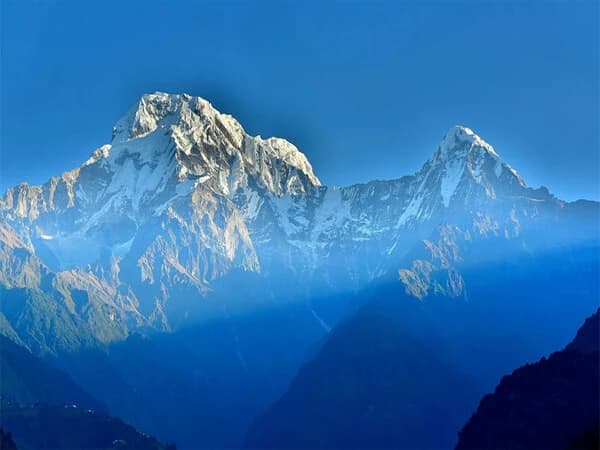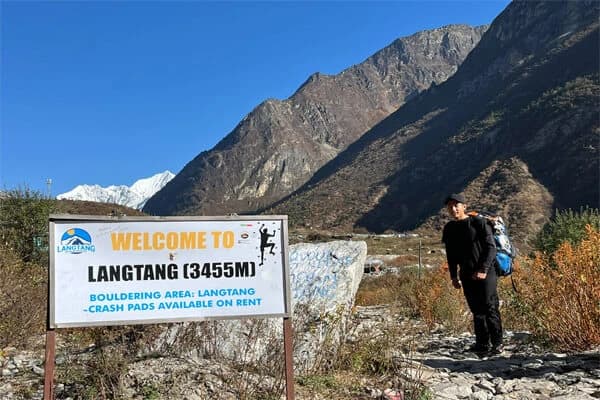Kathmandu serves as the emotional and logistical center of every Nepal trek, in addition to being the entry point to the Himalayas. The city prepares the groundwork for Himalayan exploration, from obtaining permissions and hiring guides to purchasing equipment and making connections with other intrepid travelers. Its diverse cultural fabric, which includes temples, stupas, and busy squares, acquaints visitors with Nepalese culture before they arrive. Local hospitality, lively marketplaces, and culinary experiences give preparation more dimensions.
Beyond the Mountains: Why Every Trek Starts in Kathmandu
The vibrant capital of Nepal, Kathmandu, is where all great Himalayan adventures start. Dreams of scaling the highest peaks in the world begin to take shape in this city, which is nestled in a valley encircled by verdant hills and historic temples. The air seems different as soon as you get off the plane at Tribhuvan International Airport; it is thinner, colder, and full of the subdued thrill of adventure.
More than just a busy capital, Kathmandu is the cultural and spiritual center of Nepal, where the past and present coexist together. Colorful prayer flags fly over busy streets, narrow alleys lead to courtyards that date back centuries, and the far-off view of snow-capped mountains serves as a reminder of the road ahead. This city serves as the initial destination for trekkers, where they can obtain permits, meet guides, get acclimated to Nepali culture, and mentally and physically prepare for the upcoming routes.
But Kathmandu has more to offer than just practicality; it offers a link to the heart of the Himalayas. Its revered temples, hospitable residents, and mountain spirit prepare visitors for moments of introspection and awe in addition to physical difficulties. This blog will discuss how this city sets the tone for all Himalayan travels by fusing spirituality, adventure, and preparedness into a single, life-changing start.
Kathmandu: Where Preparation Meets Discovery
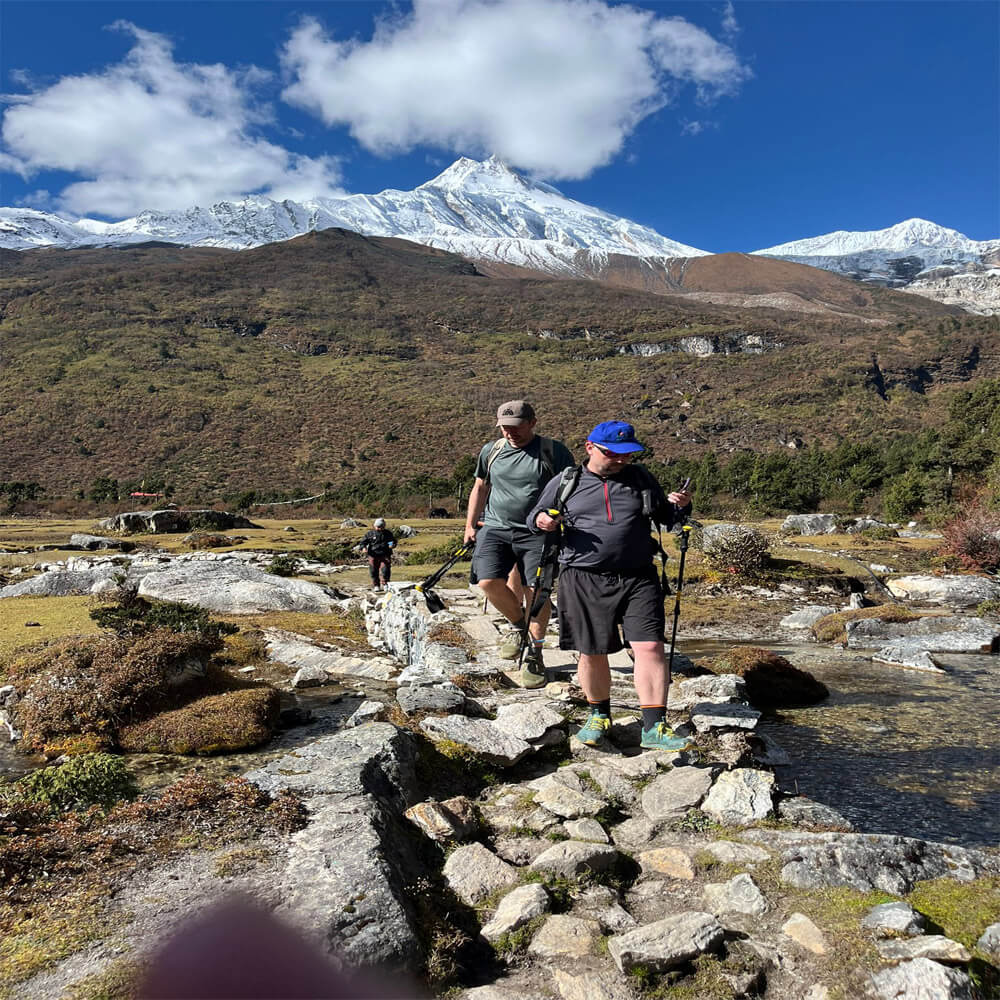
Kathmandu is the starting point of any Himalayan journey, not merely a place to stop. Trekkers spend a few days preparing in Nepal's bustling city before setting foot on Everest, Annapurna, or Langtang. However, this phase is not just about planning; it is also about getting a sense for the city's rhythm, making friends with other tourists, and experiencing the distinct blend of turmoil and serenity that characterizes Kathmandu.
Preparation: The Realistic Aspect of Trekking Life
Most trekkers go directly to Thamel, the bustling tourist area of Kathmandu, when they arrive. Shops selling everything from solar chargers and yak wool socks to sleeping bags and trekking poles along narrow alleyways lined with vibrant prayer flags. Thamel provides everything you need, whether you forgot your gloves or want to enhance your equipment, and at shockingly affordable pricing.
Trekkers also take care of necessities like national park or conservation permits and TIMS cards (Trekkers' Information Management System) before leaving. In order to streamline the procedure and guarantee that all documentation is in place, many people choose to arrange these through local organizations. In addition to confirming teahouse reservations and guides, airlines and travel agencies assist in scheduling domestic flights, including the well-known one to Lukla, the entry point to Everest.
In this way, Nepal trekking logistics revolve around Kathmandu. As trekkers pack and repack their bags, double-check their maps, and sip tea with strangers who quickly become trail mates, it is where excitement and preparation mix and dreams begin to come true.
The Buzz of Thamel: Stories in Every Corner
Thamel is a microcosm of the trekking community in addition to being a shopping area. Returned trekkers fill every café with accounts of the excitement of climbing high passes, the friendliness of Sherpas, and sunrise vistas over Everest. Newcomers listen carefully, their eyes gleaming with excitement as they realize their own journey is about to start.
This place has an exciting yet somehow cozy vibe. You may come across a French tourist going to climb Island Peak alone, a couple getting ready for the Annapurna Circuit, or a local guide happily narrating his 20th trip to Everest Base Camp. There is a strong sense of international community in Thamel, where roads converge before splitting off into the mountains.
Balancing Planning with Exploration
Although logistics are important, the city's levels of discovery are the greatest way to prepare for Kathmandu. Trekkers frequently spend a day or two exploring areas outside of Thamel, such as strolling around Kathmandu Durbar Square's historic center, ascending to Swayambhunath Stupa (the Monkey Temple) for sweeping vistas, or attending sunset prayers at Pashupatinath Temple.
These encounters help the traveler to ground themselves. They serve as a reminder that trekking in Nepal is about more than just accomplishing high altitudes; it is also about getting to know the locals and learning about their culture and spirituality, which give the trip significance.
The Emotional Build-Up Before the Trek
In Kathmandu, the excitement grows quietly. The smell of incense wafting through the streets, the way shopkeepers smile knowingly when you purchase crampons, and the way porters check ropes all convey it. It feels like the city is whispering, "You are ready, go climb."
By the time trekkers depart on their preferred path, Kathmandu has fulfilled its role. It has soothed their worries, packed their packs, and given them a sense of spiritual grounding and practical insight.
Kathmandu is a precursor to change rather than merely a doorway. Here, in its marketplaces, temples, and tea shops, preparation meets exploration and adventure breathes its first breath. This is where every mountain tale starts.
Cultural Foundations Before the Trek
Every trek across Nepal starts with an immersion into the Kathmandu Valley's culture before traveling even a single step toward the Himalayas. The city serves as more than just a starting point; it is a historical and spiritual classroom where visitors may learn about the customs that influence mountain life. Together, Kathmandu, Patan, and Bhaktapur make up Nepal's cultural core; they are home to several historic temples, revered stupas, and customs that speak to the nation's spirit.
A Spiritual Awakening: Swayambhunath Stupa (Monkey Temple)
Swayambhunath Stupa is one of the most revered and ancient Buddhist landmarks in Nepal, nestled high above the city. Its all-seeing eyes, which represent compassion and knowledge, gaze out over the valley. Before their Himalayan journey, trekkers find peace as prayer wheels spin with gentle chants and prayer flags flutter in the breeze. Many people pause here to think, to pause, to take a big breath, and to psychologically get ready for the days of walking that lie ahead. It serves as a reminder that trekking in Nepal requires not just stamina but also spiritual equilibrium and attentiveness.
PashupatinathTemple: The Sacred Rhythm of Life
Mounted on the banks of the Bagmati River, Nepal's most revered Hindu sanctuary, Pashupatinath Temple, is devoted to Lord Shiva. Rituals abound at the temple complex, including chanting priests, cremation ceremonies, and ash-covered holy men known as sadhus. It serves as a potent reminder to tourists of the biological cycle and the spiritual fervor that characterize Nepali culture. Seeing Pashupatinath before venturing into the mountains provides a more profound understanding: life is a voyage of transience and exploration, much like trekking. This trip grounds many trekkers, serving as an emotional prelude to the seclusion and introspection that the high Himalayas evoke.
Kathmandu Durbar Square: A Walk Through History
In the center of the capital is Kathmandu Durbar Square, a living museum of temples, courtyards, and ancient buildings. Through elaborate stone sculptures and wood carvings, the square, which was once the royal residence of the Malla monarchs, narrates tales of Nepal's creative heyday. Visitors explore the labyrinth of temples, including Taleju Temple, Hanuman Dhoka Palace, and Kumari Ghar (residence of the Living Goddess), taking in centuries' worth of history in a single walk. The combination of architecture, art, and religion is most evident here. Durbar Square represents a symbolic start for many trekkers, a transition from the past into the adventure of the present.
Bhaktapur and Patan: The Soul of Newar Culture
Outside of the capital, Patan (Lalitpur) and Bhaktapur provide a more subdued yet no less fascinating cultural experience. Known as the "City of Devotees," Bhaktapur captivates tourists with its cobblestone lanes, imposing pagodas, and traditional craftspeople making woodwork and ceramics. Patan exudes grace and spiritual serenity with its golden temples and hallowed courtyards. Newar craftsmanship, which forms the basis of much of Nepal's architectural splendor, is on display in both cities. Before trekking, visitors might spend a day or two touring these communities to get a sense of the passion and artistry that characterize Nepali culture.
Culture as Preparation for the Trail
The goal of the days spent touring around Kathmandu Valley is to experience Nepal's rhythm, not merely to view the sites. Each stupa, shrine, and courtyard imparts the virtues of presence, patience, and respect qualities that are essential to a successful trip. Gaining knowledge of regional traditions, picking up a few Nepali pleasantries, and sampling regional cuisine like momo or dal bhat strengthens ties to the land and its inhabitants.
The spiritual and cultural underpinnings of Kathmandu serve as a reminder to trekkers that their trip is not just through nature but also through generations of human tenacity and devotion before they even set foot on the mountain routes. With the help of Nepal Trekking Routes, visitors can have an incredible journey that combines the breathtaking splendor of the Himalayas with the revered center of the valley.
The Pulse of Thamel: Trekkers’ Haven
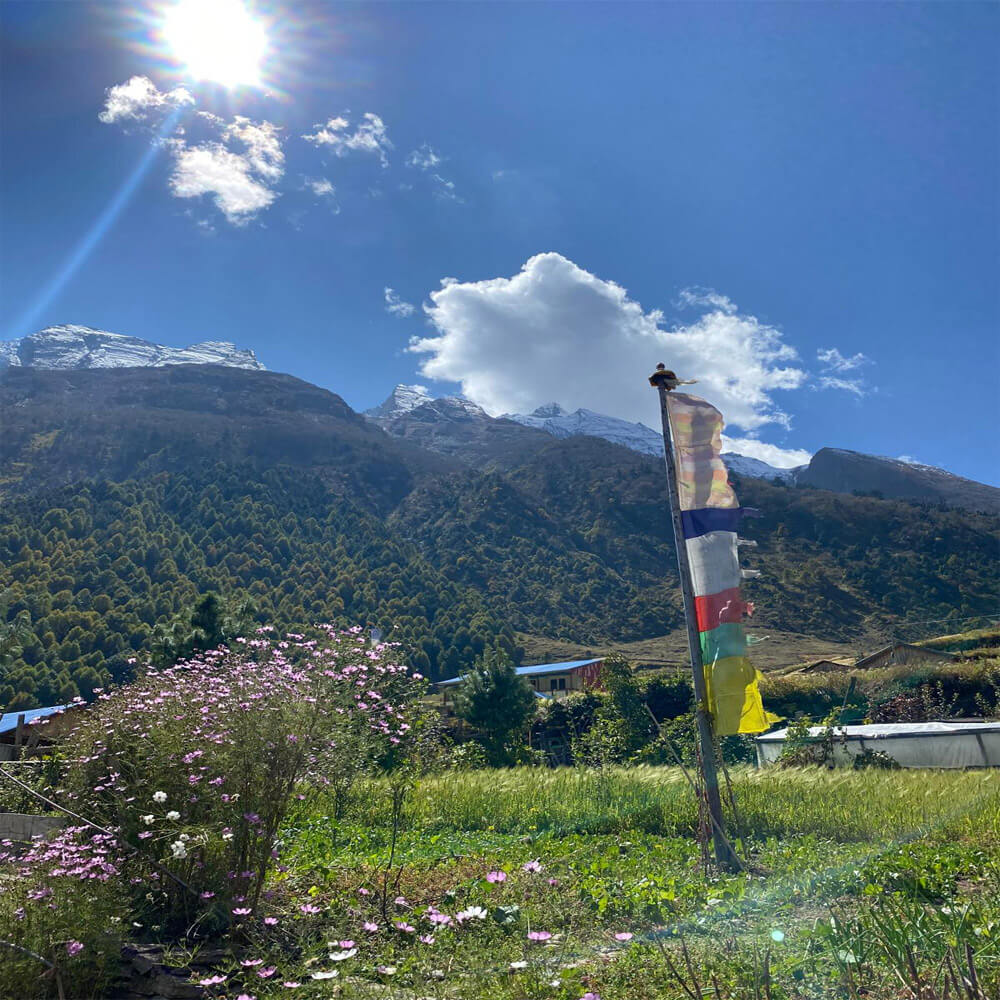
If Kathmandu is the heart of Nepal, then Thamel is its beating pulse with a map, a backpack, and a Himalayan dream in mind, that is. The vitality that seems to throb through every narrow lane is what eventually draws every trekker who lands in the city here. Thamel is more than simply a neighborhood; it is an experience, a vibrant intersection where adventure and preparedness collide, and where the allure of Nepali culture and the impending journey collide.
A World Within a Few Blocks
Despite only covering a few blocks, Thamel's maze of streets contains a whole world. Here, local handcraft stores coexist with international brands of trekking gear, and historic temples lie next to contemporary cafés. The sound of prayer bells combines with guitar music from rooftop eateries, and the aroma of roasted coffee combines with incense from small shrines.
Trekkers from all over the world share stories with local guides, and inquisitive tourists browse art galleries or spice markets in this cross-cultural destination. Offering both the bustle of Kathmandu's streets and the coziness of a neighborhood, Thamel comes alive at all hours.
Gear Up for Adventure
Thamel is the best place for trekkers to prepare. You can find everything you need for your trip through the Himalayas here, including maps, energy bars, trekking poles, sleeping bags, and down jackets. Numerous stores selling outdoor gear line the streets, ranging from high-end international brands to reasonably priced local substitutes.
Our trekking organization, Nepal Trekking Routes, is available for guests to reserve guided excursions, obtain permits, and complete itineraries. This is where your trip really starts, whether your goal is to reach Everest Base Camp, explore the Annapurna Circuit, or embark on a picturesque cultural tour.
Thamel provides conceptual preparation in addition to practical preparation. Anticipation is heightened by the welcoming conversation with guides, the aroma of freshly made coffee in neighborhood cafés, and the sight of vibrant prayer flags flying overhead. Every corner seems to be whispering, "This is where your journey begins."
A Cultural Melting Pot
Thamel is a display of Nepal's rich culture and friendliness, and it is not just for trekkers. You can discover music bars playing reggae and blues music with traditional Nepali songs if you walk along any street. From vegan smoothies and Italian spaghetti to momos and dal bhat, restaurants have it all.
Cultural evenings are frequent; live music performances and Nepali folk dances combine the traditional and the modern in a vibrant way. These experiences provide many tourists a better grasp of Nepal outside of the mountains and a taste of its inventiveness, tenacity, and happiness.
Amidst the commotion, there are also moments of peaceful beauty, such as a local woman lighting a butter lamp outside a shrine, a Buddhist monastery hidden in an alleyway, or a vendor selling handwoven scarves. Similar to Nepal itself, Thamel has a fast-paced, intensely spiritual cadence.
The Spirit of Connection
Thamel's sense of community may be what really sets it apart. It is where strangers exchange trekking advice, strangers become friends over cups of masala tea, and returnees retell their mountain tales. Locals welcome you with "Namaste," and visitors from all over the world grin at each other, demonstrating the genuine sense of community that exists here.
Thamel transforms from a place to visit into a memory in and of itself in the evening, when the streets are illuminated by lanterns hanging from the ceilings and rooftop terraces resound with laughter. It is where many people first experience the reality of their Himalayan fantasies.
A Perfect Beginning and End
Thamel is where every Nepal trek starts and finishes. It is where you muster your confidence, prepare your supplies, and make your travel itinerary. And it is where you go to relax, celebrate, and think after you get back, exhausted, sunburned, but giddy with success.
The Starting Point to All Iconic Treks
The majestic peaks of Everest, Annapurna, Langtang, and beyond are frequently the first things that come to mind when someone imagines trekking in Nepal. However, Kathmandu is the starting point of every great Himalayan expedition, despite its modesty. The capital city is more than simply a location to stop; it is the center of every trekking expedition, where plans are made, dreams are shaped, and the real adventure starts.
Kathmandu: The Trekking Nerve Center of Nepal
All roads (and flights) begin in Kathmandu, regardless of where your boots are going: the Annapurna Circuit, the Manaslu Circuit, or the Everest Base Camp. It is the primary entry point to the Himalayas and functions as a base of worship as well as a logistics center. Here, you can obtain regional permits (such those for Sagarmatha or Annapurna) or trekking permits like the TIMS card. To get ready for the path ahead, you meet your porters and guides, inspect your equipment, and go to briefings. Many people also use this time to enjoy the excitement, whether it is by attending last-minute shopping sprees for down coats and sleeping bags or sharing stories over coffee with other trekkers in Thamel.
People from all over the world come to Kathmandu with the same dream: to stroll over the Himalayas. The city feels electrifying because of this shared expectancy, which resembles a fork in the road between the commonplace and the remarkable.
From the Valley to the Sky: The Journey Begins Here
From Kathmandu, you will probably take a short, exhilarating flight before you glimpse the snow-capped peaks. Trekkers take one of the world's most picturesque (and daring) aviation routes, from Kathmandu to Lukla, to reach the Everest region. Road travel to Pokhara or Syabrubesi may be the next step in the Annapurna or Langtang treks.
With the sound of the airport, the fluttering prayer flags waving you off, and the early morning wake-up call, each tour begins with the spirit of Kathmandu. This moment, leaving the hustle and bustle of the city behind and moving into the quiet of the mountains, has a profoundly symbolic meaning. It is a shift from contemporary pandemonium to the tranquility of nature.
Even the roads that lead from Kathmandu to Dhunche, Besi Sahar, or Jiri are replete with tales of hundreds of trekkers who have traveled these same routes for many years. Kathmandu is the starting point for all Himalayan journeys, despite these variations.
A Hub for Every Trekking Dream
All of Nepal's main trekking routes begin in Kathmandu. This metropolis gets you ready for whatever lies ahead, whether you are traveling north to Langtang, west to Annapurna, east to Everest, or even into forbidden areas like Manaslu or Upper Mustang.
- Everest Region Treks: The Everest Base Camp Trek, Gokyo Lakes Trek, and Everest View Trek are among the most well-traveled routes, and they all begin with a flight or a vehicle ride from Kathmandu to Lukla or Phaplu.
- Annapurna Region Treks: Most trekkers go from Kathmandu to Pokhara before beginning a trip like the Annapurna Circuit or Annapurna Base Camp.
- Langtang and Tamang Heritage Trails: A picturesque journey from Kathmandu to Syabrubesi is the starting point for these northern treks.
- Manaslu and Tsum Valley: Roads connect Kathmandu to starting locations such as Machha Khola or Soti Khola.
- Upper Mustang and Dolpo: Special permissions, flights, and meticulous planning are necessary for these far-flung excursions, and they are all coordinated from Kathmandu.
In many respects, Kathmandu serves as the command headquarters for trekking activities, transforming aspirations of climbing mountains into well planned journeys.
Where Every Trek Ends, Too
Kathmandu is beautiful because it welcomes you back as well as sending you out. Returning to the city after spending weeks in the mountains is like reentering civilization, but with fresh perspectives. After strenuous trekking, the pleasure of hot baths, heated meals, and valley views from the rooftop feels wonderful.
It is also a time to celebrate, whether it is with a quiet drink with your guide, shopping for souvenirs in Thamel, or paying respects at Swayambhunath Stupa. As the final link in the trekking narrative, Kathmandu serves as both the start and the end of the journey.
The unsung hero of Nepal's Himalayan trekking journey is Kathmandu. It is where travelers connect, where the details come together, and where dreams are given wings, sometimes literally. The city energizes every visitor with its layers of spirituality, centuries of history, and contemporary pulse.
Kathmandu will always be your starting point, both physically and emotionally, whether you are getting ready for your first trek or returning for another Himalayan challenge.
A Taste of Nepalese Culture Before the Trail
Kathmandu provides a friendly and lively introduction to Nepali culture before trekkers put on their boots and set off into the mountains. The city is more than just a location to stop; it is a place to experience the rhythm, art, and cuisines of the area. Every area of the valley, from the centuries-old craftsmanship to the traditional gastronomy, gets you ready for the journey ahead.
Traditional Flavors: A Culinary Journey Through Kathmandu
The cuisine of Kathmandu combines Tibetan, Newari, Nepali, Indian, and even Western elements in a delicious mashup. Most tourists visit local restaurants before trekking, where every meal is an initiation into Nepali culture.
You may begin with a hearty bowl of dal bhat, the traditional rice and lentil dish that powers trekkers across the Himalayas. Many residents make the joke that "dal bhat power, 24 hour," and they are not mistaken it is filling and healthy.
For a more joyous experience, Newari food provides a more profound exploration of Kathmandu's cultural heritage. Popular local dishes in Bhaktapur and Patan include chatamari (rice crepe), bara (lentil pancake), and yomari (sweet rice dumpling with molasses).
Cozy cafés in Thamel provide a wide variety of dishes, such as momos (steamed dumplings) and yak cheese sandwiches, striking the ideal mix between comfort cuisine and regional customs. In addition to satisfying your hunger, dining in Kathmandu allows you to establish a connection with the locals and the region before you even set foot on the trek.
Music, Dance, and the Pulse of Everyday Life
The best way to experience Nepalese culture is through its dance and music. You can hear a mix of laughter, temple bells, and folk songs as you meander around Kathmandu's winding lanes, creating the city's distinctive soundscape.
Local eateries or cultural institutions may host live traditional performances in the evenings, where dancers dressed in vibrant costumes move elegantly to the rhythm of madal drums. These performances frequently combine mythology with common emotions to narrate old tales of gods, love, and mountains.
The sound of street entertainers, singing bowls, and chanting monks may transform even leisurely strolls through Patan or Thamel into musical experiences. This balance of everyday life feels reassuring to trekkers. A reminder that Nepal’s beauty lies not only in its mountains but in its living traditions.
Art, Craft, and Sacred Creativity
Craftspeople in the Kathmandu Valley have been honing their trades for many years. Many visitors spend time touring the Thangka painting studios dispersed around the valley, the pottery squares of Bhaktapur, or the art workshops in Patan before moving into the highlands.
One can gain a profound understanding of Nepal's spiritual artistry by witnessing a painter create a mandala or a craftsman carve a wooden god. These crafts are more than just trinkets; they are representations of perseverance, loyalty, and the centuries-old cultural pulse.
To see monks make elaborate sand mandalas, a meditative art style that symbolizes the transience of life, some trekkers even travel to monasteries. Travelers can enter the mountains with attention and reverence for the Sacred Landscapes by witnessing this level of creativity prior to their excursion.
Local Festivals: The Spirit of Celebration
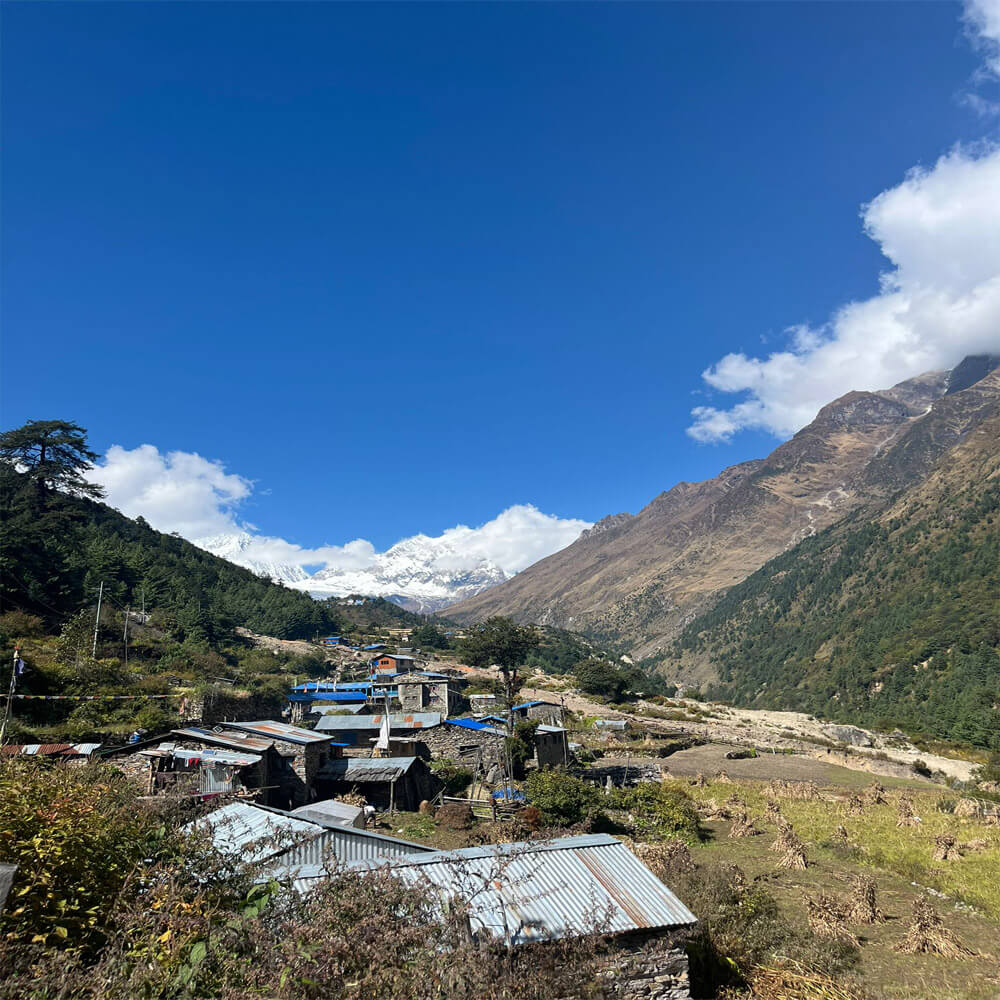
If you start your trip during a festival, Kathmandu is even more enchanting. During festivals like Dashain, Tihar, Indra Jatra, and Holi, the city celebrates life by filling the streets with devotion, light, and song.
Temples swell with worshippers, marigolds adorn homes, and happiness appears to radiate from every face at these times. Observing such festivities provides insight into Nepal's profound spirituality and cultural togetherness. It serves as an encouraging reminder to trekkers that the journey is about more than just reaching peaks; it is also about getting to know the people that inhabit them.
Setting the Emotional Tone for the Trek Ahead
In addition to providing practical preparation, spending a few days in Kathmandu prior to trekking increases your emotional preparedness. Every incense smell, every local vendor's smile, and every prayer flag fluttering in the wind serves as a reminder that trekking in Nepal is a journey of the body and the soul.
Trekkers experience a gentle metamorphosis from visitor to traveler, from spectator to participant, as they immerse themselves in the city's cuisine, art, and music. You bring a bit of Kathmandu's spirit with you when you eventually set foot on the trail: a sense of connectedness, humility, and thankfulness.
Not only is Kathmandu the entryway to the Himalayas, but it is also the beating heart of Nepal. Spend some time tasting, hearing, and experiencing the culture that has fueled adventurers for millennia before pursuing mountain horizons.
FAQs
Why do most treks in Nepal begin in Kathmandu?
Kathmandu serves as the primary entry point via Tribhuvan International Airport. It’s also the hub for trekking logistics, including permits, guides, porters, gear shopping, and flight connections to starting points like Lukla, Jomsom, or Syangboche.
How much time should I spend in Kathmandu before a trek?
Spending 1–2 days is ideal. This allows time for acclimatization, obtaining permits, organizing gear, and exploring cultural sites like Durbar Squares, Swayambhunath, or Pashupatinath.
Is it necessary to hire a guide in Kathmandu?
Yes, especially for restricted regions or high-altitude treks. Licensed guides help with permits, route planning, safety, and cultural insights.
What cultural experiences can I enjoy in Kathmandu before trekking?
Trekkers can visit UNESCO World Heritage Sites, enjoy traditional cuisine, explore Thamel markets, and participate in local festivals to immerse in Nepalese culture.
Can Kathmandu be visited after completing a trek?
Absolutely. Many trekkers return to Kathmandu to rest, shop, and reflect on their journey. It provides a perfect cultural and emotional closure to Himalayan adventures.
Conclusion: Trek Starts in Kathmandu
Kathmandu is a city that embodies Nepal with its bustling streets, revered temples, and friendly people. Every great Himalayan expedition starts and finishes here. Trekkers draw inspiration from Kathmandu's blend of culture, history, and spirituality before venturing into the mountains. Here, people make acquaintances, pack their kit, and develop their aspirations. And after finishing the journey, tired but content, visitors come back to this valley to consider what they have seen and experienced. Kathmandu serves as the emotional cornerstone of each Himalayan journey, not just a place to start. You may comfortably, confidently, and culturally deeply experience this vibrant city and be ready for your mountain adventure with Nepal Trekking Routes.

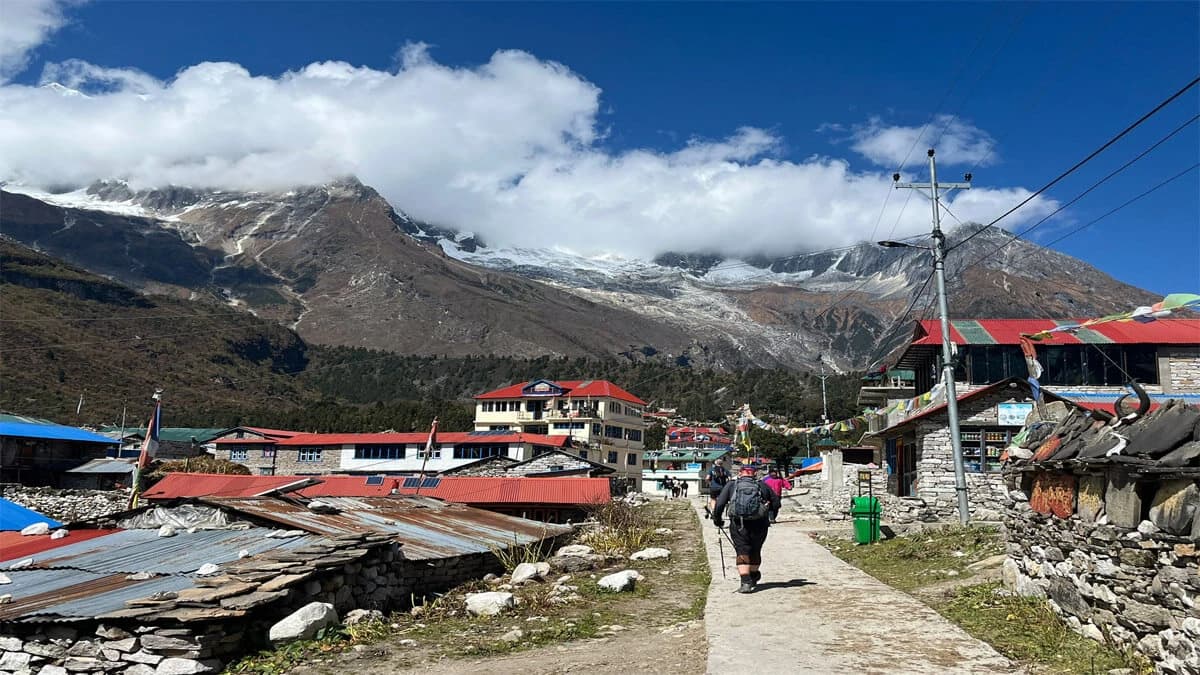
.webp&w=1200&q=75&dpl=dpl_4U3CaZUV3Y5iKdBNPJmVMATJy3AB)
